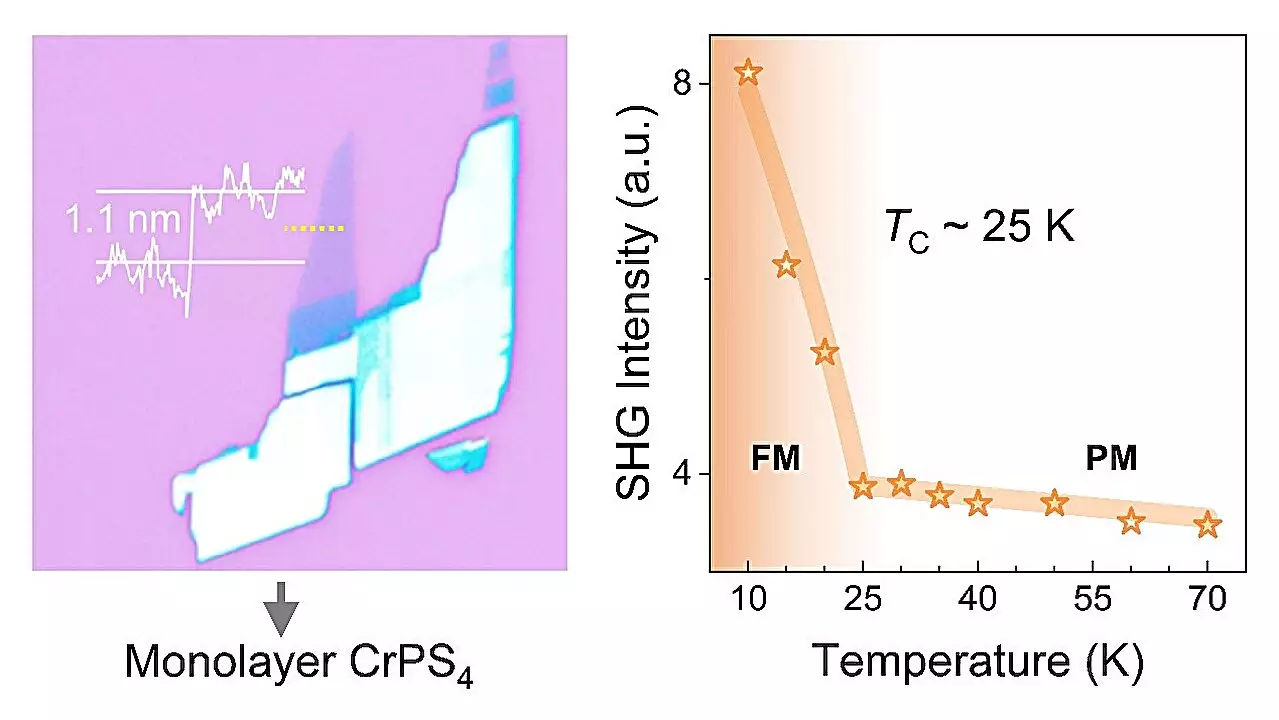The world of physics has been shaken by a recent discovery made by Professor Sheng Zhigao and his research team at the Hefei Institutes of Physical Science of the Chinese Academy of Sciences. They have successfully observed the strong nonlinear magnetic second harmonic generation (MSHG) induced by ferromagnetic order in monolayer CrPS4, a two-dimensional van der Waals material. This groundbreaking discovery opens up new possibilities in the field of optoelectronics.
Second harmonic generation (SHG) is a nonlinear optical effect that is sensitive to symmetry breaking in materials. Traditionally, SHG was only seen in crystals with broken symmetry (i type), and was weaker in magnetic systems (c type). This limitation had previously hindered the potential use of magnetic materials in optical devices.
Through their study on monolayer CrPS4, Professor Sheng’s team found that the antiferromagnetic order in bulk and even-layered CrPS4 did not induce any c type SHG effects. However, an exciting discovery was made in odd-layered CrPS4, where a substantial c type SHG effect was observed due to ferromagnetic order. This observation marks the first time that ferromagnetic order has induced c type SHG effects in a 2D magnet under the electric-dipole approximation.
Implications of the Discovery
The research team’s finding that the ferromagnetic order induced c type SHG has a signal strength comparable to that of i type SHG, which stems from breaking crystal structural symmetry, is a rare occurrence in the realm of magnetic materials. This discovery opens up new avenues for utilizing magnetic materials in optoelectronic devices, and sheds light on the intricate relationship between magnetic order and nonlinear optical effects.
The research conducted by Professor Sheng Zhigao and his team represents a significant advancement in the understanding of second harmonic generation effects induced by ferromagnetic order in two-dimensional materials. This breakthrough has the potential to revolutionize the field of optoelectronics and pave the way for the development of advanced optical devices with enhanced capabilities. The implications of this discovery are vast, and future research in this area holds great promise for further innovations in the field of physics.

